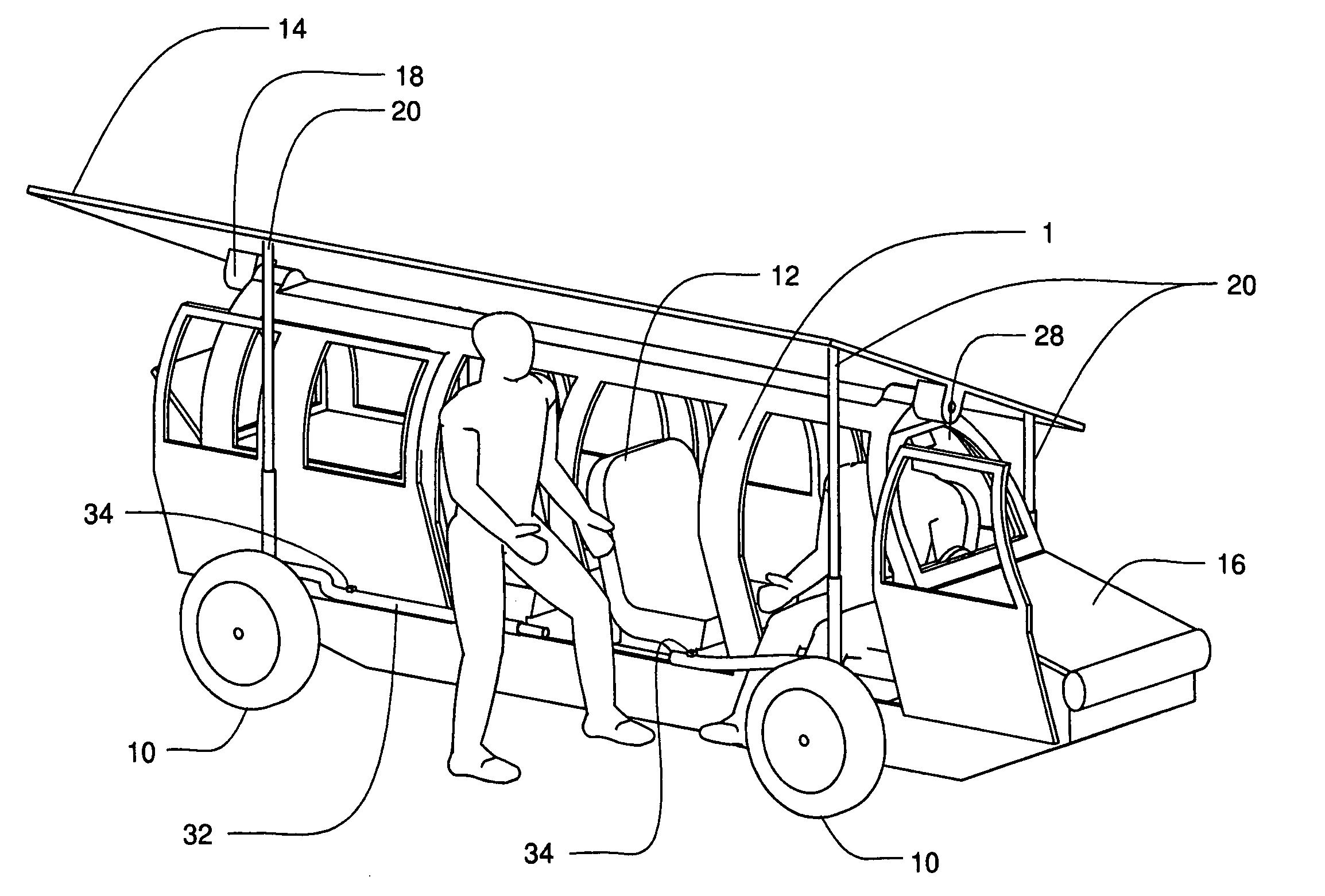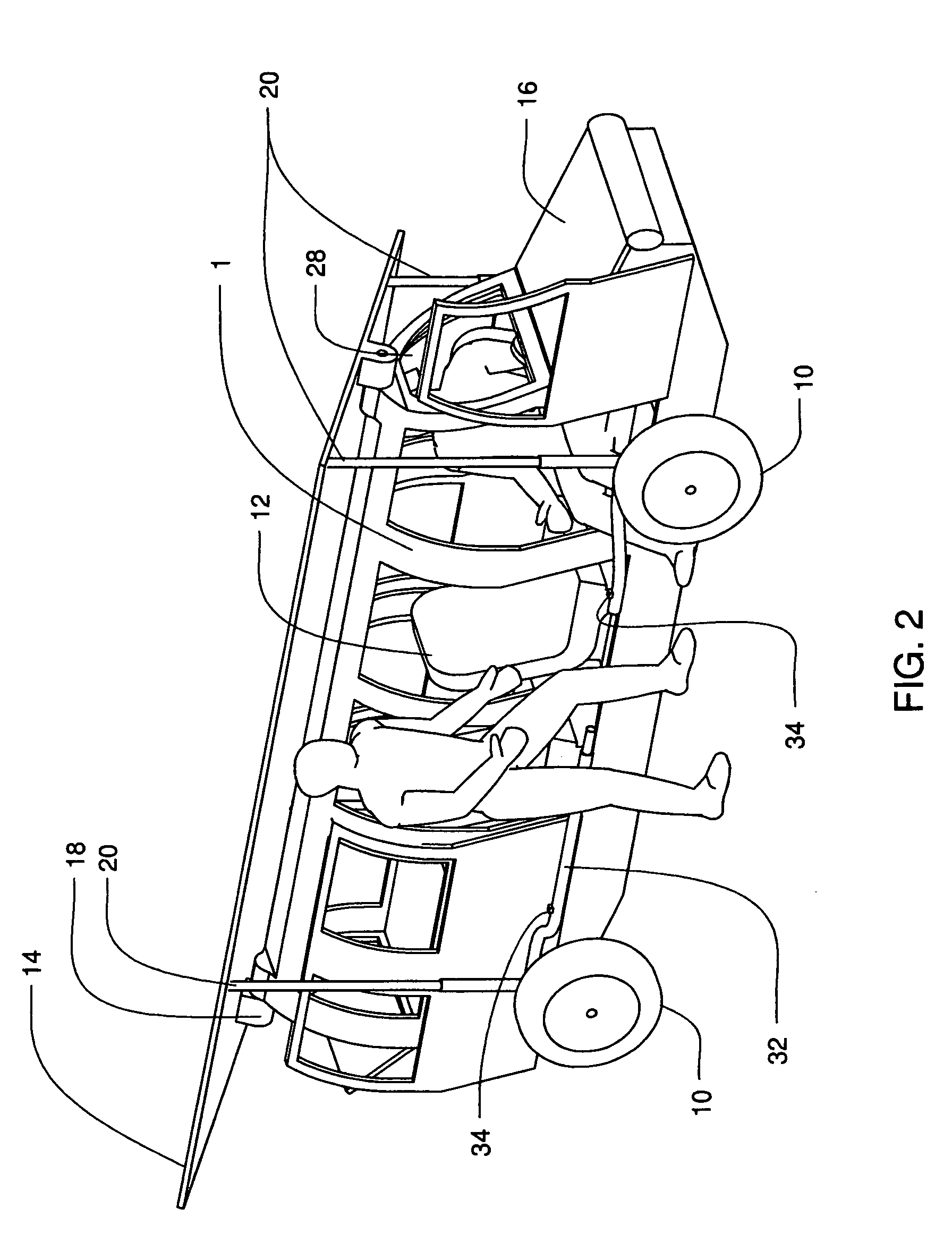Electric car with maximized solar assist
a solar energy and assistive technology, applied in the direction of light-to-electric conversion, transportation and packaging, propulsion parts, etc., can solve the problems of limited speed or driving range, lack of solution to the problem of carrying multiple passengers, and easy to get,
- Summary
- Abstract
- Description
- Claims
- Application Information
AI Technical Summary
Benefits of technology
Problems solved by technology
Method used
Image
Examples
Embodiment Construction
[0075]Referring to FIGS. 1 and 2, the body 1 is supported by the four wheels 10. Located where a hood would normally go on body 1 is the hood solar panel 16. Located on the roof of the body 1 is the solar panel roof 14. Located near the front of the body 1 on the inside near the top of where the windshield 28 is located are the sensor displays 22. Figure one only depicts how the sensor displays 22 can be wirelessly accessed by the communicator 24 that the driver 38 is holding. Between the wheels are side bumpers 32. Mounted on the side bumpers are sensors 34 to tell if the vehicle has suffered a side impact collision 34 which could set off outside air bags. Coming up from the side bumpers 32 are supports 20 which connect with and help support the solar panel roof 14. As you can see by comparing the length of these supports 20 in the figures one and two, these supports 20 can move up and down as the solar panel roof 14 moves up and down. Under the solar panel roof 14 near the back of...
PUM
 Login to View More
Login to View More Abstract
Description
Claims
Application Information
 Login to View More
Login to View More - R&D
- Intellectual Property
- Life Sciences
- Materials
- Tech Scout
- Unparalleled Data Quality
- Higher Quality Content
- 60% Fewer Hallucinations
Browse by: Latest US Patents, China's latest patents, Technical Efficacy Thesaurus, Application Domain, Technology Topic, Popular Technical Reports.
© 2025 PatSnap. All rights reserved.Legal|Privacy policy|Modern Slavery Act Transparency Statement|Sitemap|About US| Contact US: help@patsnap.com



